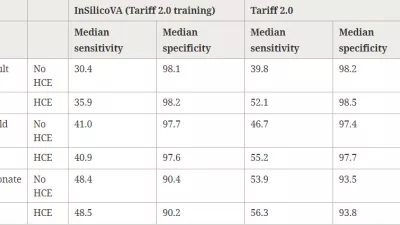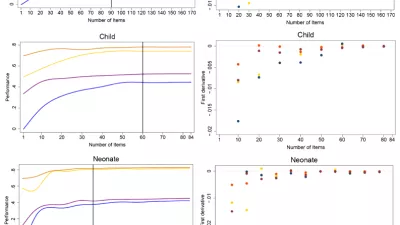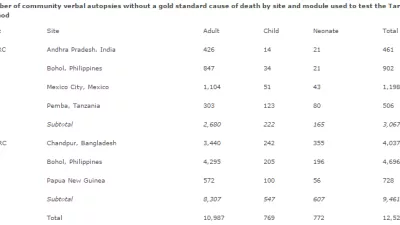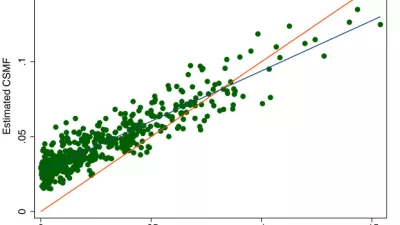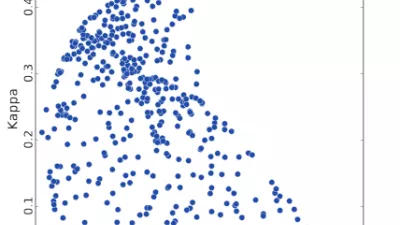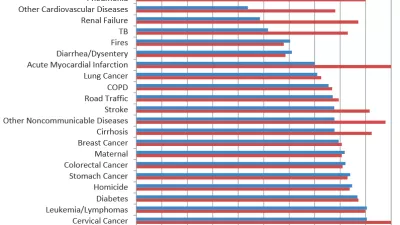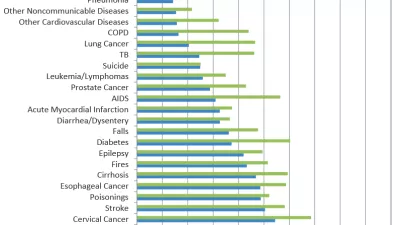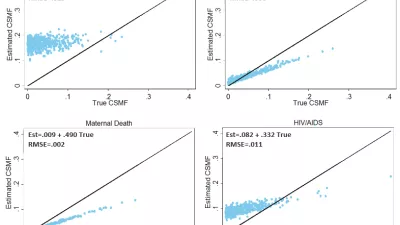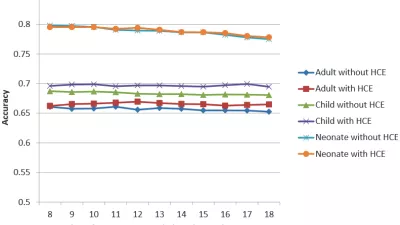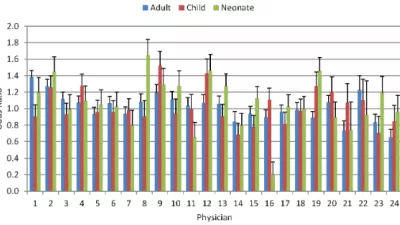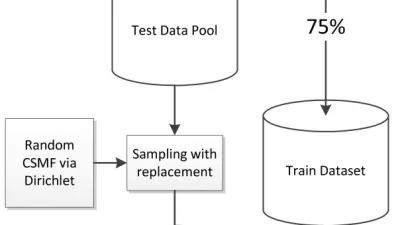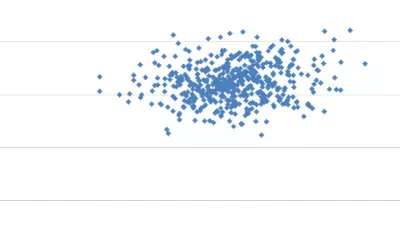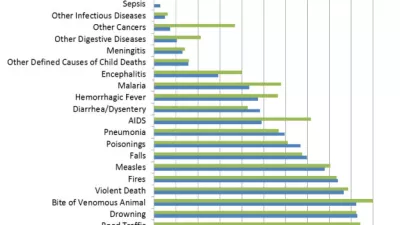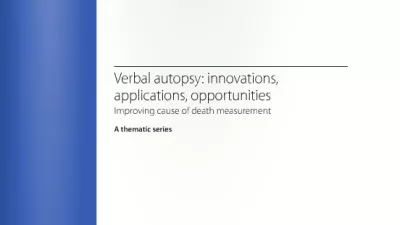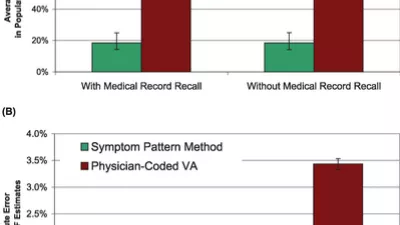Verbal autopsy publications
Performance of InSilicoVA for assigning causes of death to verbal autopsies: multisite validation study using clinical diagnostic gold standards
We perform a standard procedure for analyzing the predictive accuracy of verbal autopsy classification methods using the same data and the publicly available implementation of the algorithm released by the authors. We extend the original analysis to include children and neonates, instead of only adults, and test accuracy using different sets of predictors, including the set used in the original paper and a set that matches the released software.
A shortened verbal autopsy instrument for use in routine mortality surveillance systems
Verbal autopsy (VA) is recognized as the only feasible alternative to comprehensive medical certification of deaths in settings with no or unreliable vital registration systems. However, a barrier to its use by national registration systems has been the amount of time and cost needed for data collection. In this paper we describe a shortened version of the VA instrument developed for the Population Health Metrics Research Consortium Gold Standard Verbal Autopsy Validation Study using a systematic approach.
Improving performance of the Tariff Method for assigning causes of death to verbal autopsies
In the absence of comprehensive medical certification of deaths, the only feasible way to collect essential mortality data is verbal autopsy (VA). The Tariff Method was developed by the Population Health Metrics Research Consortium to ascertain causes of death from VA information. We describe the further development of the Tariff Method.
Using verbal autopsy to measure causes of death: the comparative performance of existing methods
Monitoring progress with disease and injury reduction in many populations will require widespread use of verbal autopsy (VA). Multiple methods have been developed for assigning cause of death from a VA but their application is restricted by uncertainty about their reliability.
Robust metrics for assessing the performance of different verbal autopsy cause assignment methods in validation studies
Choosing the best method for verbal autopsy (VA) requires the appropriate metrics to assess a given method’s performance, and researchers from IHME and the University of Queensland undertook a study to determine these metrics.
Assessing quality of medical death certification: concordance between gold standard diagnoses and underlying cause of death in selected Mexican hospitals
The vital registration system in Mexico relies on information collected from death certificates to generate official mortality figures. A study by researchers at IHME and the National Institute of Public Health in Mexico set out to test the validity of this system.
Random forests for verbal autopsy analysis: multisite validation study using clinical diagnostic gold standards
An innovative method of computer-coded verbal autopsy, the Random Forest (RF) Method from machine learning, was found to outperform physician-certified verbal autopsy (PCVA) in almost all settings, according to a study by researchers from IHME and the Bill & Melinda Gates Foundation as part of the Population Health Metrics Research Consortium (PHMRC).
Performance of InterVA for assigning causes of death to verbal autopsies: multisite validation study using clinical diagnostic gold standards
InterVA, an automated and widely available tool for assigning cause of death using verbal autopsies (VAs), does not perform as well as other methods, such as physician-certified verbal autopsy (PCVA) and the Simplified Symptom Pattern (SSP) method, according to a study published by researchers at IHME and the University of Queensland, as part of the Population Health Metrics Research Consortium (PHMRC).
Direct estimation of cause-specific mortality fractions from verbal autopsies: multisite validation study using clinical diagnostic gold standards
The King and Lu (KL) method for directly estimating the fraction of all deaths in a population due to a given cause has been used to interpret verbal autopsies (VAs) in areas with incomplete vital registration systems.
Performance of physician-certified verbal autopsies: multisite validation study using clinical diagnostic gold standards
Physician certification is the most widely used method for interpreting verbal autopsy (VA), yet physicians correctly determine cause of death less than half of the time, according to new research by IHME and the University of Queensland as part of the Population Health Metrics Research Consortium (PHMRC).
Population Health Metrics Research Consortium gold standard verbal autopsy validation study: design, implementation, and development of analysis datasets
The creation of the first strictly defined gold standard database of diagnoses for causes of death will help strengthen verbal autopsy (VA) methods in low-resource settings, according to a study published by a global group of researchers, the Population Health Metrics Research Consortium (PHMRC), which includes researchers from IHME.
Performance of the Tariff Method: validation of a simple additive algorithm for analysis of verbal autopsies.
The Tariff method, an easy-to-use tool developed by researchers at IHME for turning verbal autopsy (VA) results into meaningful cause of death data for health workers and policymakers, is capable of outperforming the more costly physician-certified verbal autopsy (PCVA) approach in most cases, according to new research by IHME as part of the Population Health Metrics Research Consortium (PHMRC).
Simplified Symptom Pattern Method for verbal autopsy analysis: multisite validation study using clinical diagnostic gold standards
New research from IHME, the Department of Health Services at the University of Washington, and the University of Queensland as part of the Population Health Metrics Research Consortium (PHMRC) shows that the Simplified Symptom Pattern (SSP) method can be used to accurately interpret verbal autopsies (VAs).
Verbal autopsy: innovations, applications, opportunities
“Verbal autopsy: innovations, applications, opportunities” is a collection of the most up-to-date research to help decision-makers choose the best and most cost-effective techniques to identify causes of death in their populations.
Validation of the symptom pattern method for analyzing verbal autopsy data
Research published in PLoS Medicine in November 2007 validated a novel method for analyzing verbal autopsy data (the symptom pattern method, developed at IHME) and found that this method outperformed another common verbal autopsy analytical method (physician-coded verbal autopsy, or PCVA).
